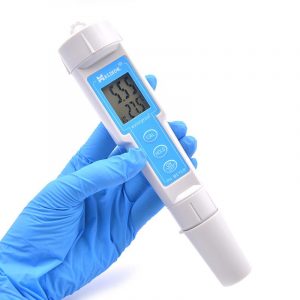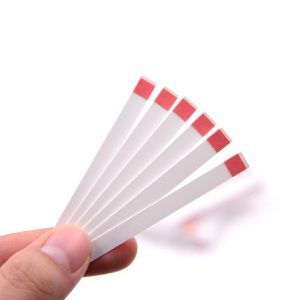règles de lecture du ph-mètre et du papier de test de ph
Pour pH-mètres et bandelettes de test PH, voici quelques règles de lecture courantes:
Règles de lecture du pH-mètre:
Étalonnage: Before using a pH meter, ensure that the correct calibration is performed. Calibration usually involves comparing the pH meter to a standard buffer with a known pH value and making adjustments.
Cleaning: Clean the probe of the pH meter using appropriate methods and solutions before taking the next measurement to avoid contamination and cross interference.
Insert measurement: Insert the probe of the pH meter into the sample to be tested, ensure that the probe is fully immersed, and wait a certain amount of time to stabilize the measurement results.
Reading: Record the pH value according to the value on the pH meter display. Be sure to observe the reading carefully and pay attention to the position and accuracy of the decimal point.

règles de lecture du ph-mètre et du papier de test de ph
pH test paper reading rules:
La préparation des échantillons: Prepare the solution to be tested and dip the probe of the test paper into the sample to ensure that the test paper is fully soaked.
Wait for reaction: According to the test paper instructions, wait for the specified time for the test paper to react with the sample.
Compare colors: Compare the test paper with the color comparison chart to find the color area that best matches the color of the test paper.
Reading pH value: Determine the relationship between the color of the test paper and the corresponding pH value on the color comparison chart, and record the corresponding pH value.

Whether you are using a pH meter or a pH test paper, follow the instructions and ensure accurate operation. Please note that different brands and models of pH meters and pH test strips may have different reading rules and use methods, so always refer to the related product’s instructions and guidelines.
